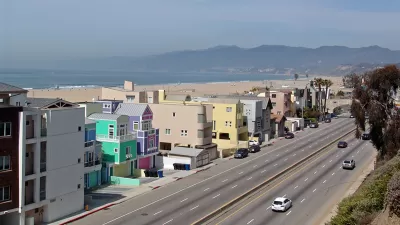With anticipated rising global temperatures, the need to cool our homes will take a massive toll on our electrical grid, which a team of masters students aims to address with their new wall insulation.
According to Adele Peters of Co. Exist, "[as] climate change makes summer heat more unbearable and incomes rise in developing nations, the world will be using a lot more air conditioning—30 times as much by the end of the century, according to one prediction. Ironically, all of that A/C also makes climate change worse. In the U.S. alone, people already use nearly 200 billion kilowatt hours of electricity for cooling each year, and countries like India and China will soon dwarf that."
A team of masters students at the Institute for Advance Architecture of Catalonia, Spain have developed a new self-cooling wall technology to address this issue. The net zero electricity system "uses a material called hydrogel that swells to 400 times its size when placed in water. In hot weather, the hydrogel slowly begins to evaporate, cooling the indoor air by about 9 or 10 degrees. The designers incorporated the hydrogel into a new composite called 'hydroceramic,' which sandwiches the gel between layers of clay and fabric to create walls that maximize the effect."
The material is nearly market-ready, and can save up to 28 percent of the energy used by air conditioning, although the article notes a lack of information on the energy required to manufacture the material.
FULL STORY: These Walls Cool Themselves, No A/C Needed

Alabama: Trump Terminates Settlements for Black Communities Harmed By Raw Sewage
Trump deemed the landmark civil rights agreement “illegal DEI and environmental justice policy.”

Study: Maui’s Plan to Convert Vacation Rentals to Long-Term Housing Could Cause Nearly $1 Billion Economic Loss
The plan would reduce visitor accommodation by 25% resulting in 1,900 jobs lost.

Why Should We Subsidize Public Transportation?
Many public transit agencies face financial stress due to rising costs, declining fare revenue, and declining subsidies. Transit advocates must provide a strong business case for increasing public transit funding.

Paris Bike Boom Leads to Steep Drop in Air Pollution
The French city’s air quality has improved dramatically in the past 20 years, coinciding with a growth in cycling.

Why Housing Costs More to Build in California Than in Texas
Hard costs like labor and materials combined with ‘soft’ costs such as permitting make building in the San Francisco Bay Area almost three times as costly as in Texas cities.

San Diego County Sees a Rise in Urban Coyotes
San Diego County experiences a rise in urban coyotes, as sightings become prevalent throughout its urban neighbourhoods and surrounding areas.
Urban Design for Planners 1: Software Tools
This six-course series explores essential urban design concepts using open source software and equips planners with the tools they need to participate fully in the urban design process.
Planning for Universal Design
Learn the tools for implementing Universal Design in planning regulations.
Smith Gee Studio
Alamo Area Metropolitan Planning Organization
City of Santa Clarita
Institute for Housing and Urban Development Studies (IHS)
City of Grandview
Harvard GSD Executive Education
Toledo-Lucas County Plan Commissions
Salt Lake City
NYU Wagner Graduate School of Public Service



























